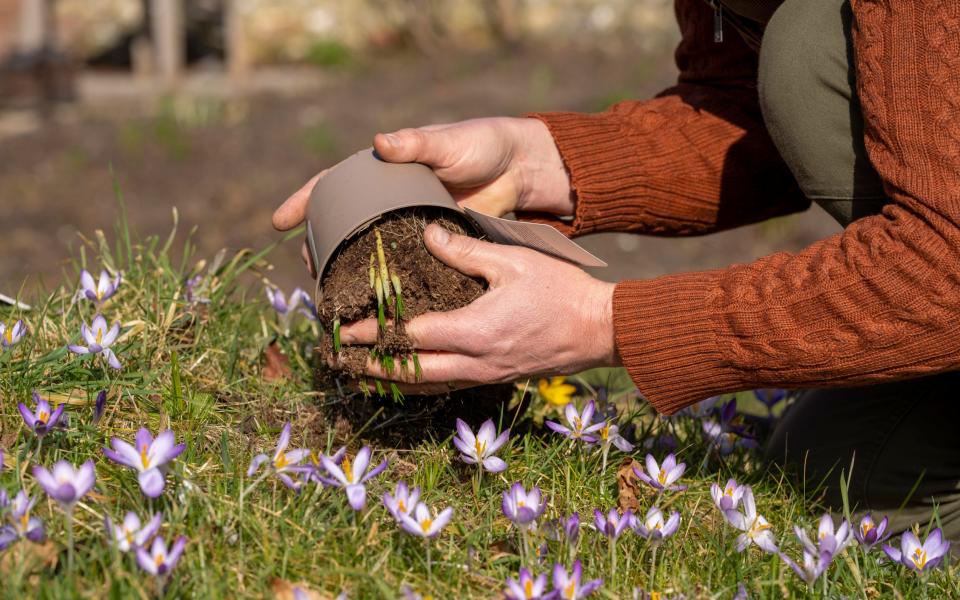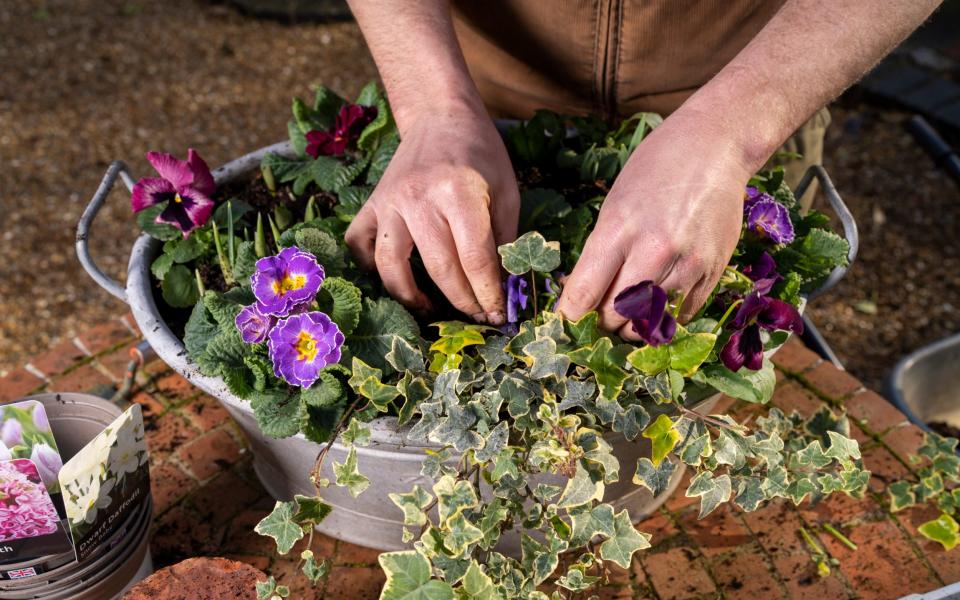Don't panic! It's not too late to plant spring bulbs

Hindsight is a wonderful thing; in an ideal world, we would have saved a bit of money and bought bulbs in September and October and planted them in good time. But when is life ever that straightforward? The good news is that we can all cut ourselves some slack: it’s not too late to allow ourselves the anticipation of spring flowers by using potted bulbs.
Simply put, these are bulbs that have been potted into compost and grown on to be ready to buy and plant at this time of year, and are widely available in most nurseries and garden centres. The trend of buying bulbs like this in February and March has become increasingly popular, and growers have responded by growing a much more diverse range than they ever have before, giving gardeners the opportunity to enjoy lots of bulb-based spring colour.
The benefits of buying bulbs in pots
One of the big bugbears of growing bulbs in containers is the tactical battle that goes on with the local squirrel population during winter. I’ve lost a few tulip bulbs this year in unprotected pots, which is a lesson hard learned, but all is not lost as lots of tulips are available to buy now.
Squirrels are much less likely to dig up bulbs when they’re in active growth, compared to when they’re dormant – and food is much scarcer –in winter. For extra protection, and if you have a particularly bad squirrel problem where you live, it’s well worth putting a piece of chicken wire across the top of your container, burying it just below soil level, which will deter even the most determined of diggers.

Spring-flowering bulbs come in 9cm and 1-litre pots, which are relatively small, so you tend to get between three and seven bulbs in each pot. Sometimes, in the garden, we don’t need to plant in big numbers; rather than a huge sea of pink tulips, we might want a few purples, a few whites, a few creams to complement our pink tulips. This is where potted bulbs come into their own, allowing us a much greater diversity in a smaller space. The container that I’ve recently planted has dwarf daffodils, tulips, hyacinths, crocus, dwarf iris and grape hyacinths.
If I’d bought dried bulbs in autumn, yes, I would have got better value for money, but I would have had lots left over that would arguably have gone to waste – or I’d have had to invest in larger containers to fit them all in.
Bulbs in borders
Colour can be very powerful in gardens at this time of year, so why not brighten up your borders by planting spring bulbs? My top tip for using bulbs in borders is to be brave and harness the art of repetition. You achieve a much greater effect and unify your space, whether that be a garden or a terrace with lots of containers, by repeating the same or similar planting style throughout.
A scattering of dwarf daffodils around your garden, rather than in one or two spots, will achieve a greater sense of balance and almost give a naturalistic feel, which can appear effortless but has a great degree of sophistication. Daffodils such as ‘Tête-à-tête’, ‘Jetfire’, ‘Minnow’ and ‘Snow Baby’ are widely available in nurseries and garden centres, and will bring a pop of colour to your borders, either planted quite densely or with 15-20cm between pots.
This repetition doesn’t need to be exclusive to one type of bulb; it could be a combination of two or three. For instance, a clump of dwarf blue irises, pink hyacinths and cream tulips will look fabulous, and repeating that group around your garden adds drama and a sense of unity.
Bulbs in grass and meadows
Meadow mania is sweeping across gardens, as a trend with huge ecological benefits, whereby we are all encouraged to be a little less tidy and allow part of our lawn to grow and flower during the summer. Traditionally, long grass is cut at the end of July, so it makes the perfect habitat for spring-flowering bulbs. Snowdrops, winter aconites and crocus will naturalise beautifully in long grass, and by the end of July they have flowered, set seed and multiplied before you reach for the mower or, for Poldark wannabes, your scythe.
Aim to plant in slightly larger numbers when it comes to meadows to give a more naturalised look. It’s also well worth cutting your grass reasonably tightly just before Christmas, before these bulbs start to emerge, so you can appreciate them fully.

If you’re a bit restricted budget-wise, then a naturalised feel can still be achieved by creating smaller groups and repeating those clumps across the meadow area.
Bulbs in containers
Bulbs in containers are fleeting; they’re fun and they let your imagination run wild. Any container with drainage holes will work, whether it be a zinc planter, a wooden trough or a large tomato tin. For those with smaller gardens, various containers of different sizes can add a splash of colour, fun and excitement. Spring bulbs in containers are there for a good time and not a long time; we can cram a number of bulbs into a relatively small pot because the plants will flower, die back and then be removed from that container and planted in your garden, where they can develop for years to come.
The principle of your container is to create impact and excitement, so there’s no need to be too conservative and sensible when it comes to your choices. I see container gardening as a real opportunity to plant lots of different bulbs, providing a long season of interest from February through to the end of April.
I tend to veer towards a minimal palette of colours with my bulbs, whether that be shades of blue, cream and pink, or oranges with purples, or reds alongside yellows.

The most important and beautiful rule about bulbs in containers is that there is no right or wrong answer when it comes to colour choices; use whichever bulbs and colours make you happy.
How to treat your bulbs after flowering
All bulbs go through a life cycle, beginning in growth, moving on to flowering, then developing their leaves to feed the bulb for the next year, and in some instances developing seed to reproduce themselves. When growing any sort of bulb, to achieve the best results, we need to understand this life cycle. You’ll be buying your potted bulbs at an immature state, when the foliage is starting to emerge.
Growing your bulbs in good compost, with a weekly seaweed feed, will help to put your bulbs on the right footing for future years. I would recommend deadheading your bulbs when they have finished flowering, as in most cases we don’t want them to produce seed, which can be a distraction from putting energy into the bulb – unless, of course, we’re hoping they will naturalise in a meadow setting.
Allow your bulbs to die back naturally, which will involve yellowing of the leaves, a perfectly natural process that doesn’t mean your bulbs are suffering in any way. Reduce the amount of water that you give your bulbs when they begin to die back, and then plant them in the garden, a little deeper than they were in the original pot, where they can flower for years to come.


